It’s no surprise that the best VR headsets are those in use by corporations and organizations that are doing simulation, design, and research. While Meta, HTC, and other well-known VR headset manufacturers have upped their game with the latest batch of high-end, consumer headsets, they still can’t really compete with the very best from companies like Varjo that design specifically for the enterprise VR market.
You might not have heard of this company before, but in 2022 Varjo began shipping its lowest-cost model, the $1,990 Varjo Aero VR headset. The new headset quickly began making waves as one of the best PCVR solutions available to consumers. I recently had a chance to go hands-on with this premium VR device to find out whether it’s really worth the expense.
The best display

Without a doubt, Varjo Aero’s mini-LED display is the best available in a VR headset for under $2,000. Meta’s latest headset provides a big boost in sharpness by concentrating the Quest Pro’s 1800 x 1920 pixel-per-eye into a smaller display space for a higher pixel density. However, that can’t compete with Varjo Aero’s super crisp 2880 x 2720 resolution.
The mini-LED backlight of the Varjo Aero provides 150 nits of brightness, possibly the most brilliant VR display in this price range. 2,000 Mini-LEDs allow very precise, localized dimming for great contrast as well. By comparison, the Aero’s strongest competitor, the Meta Quest Pro, has a little over 500 mini-LEDs.
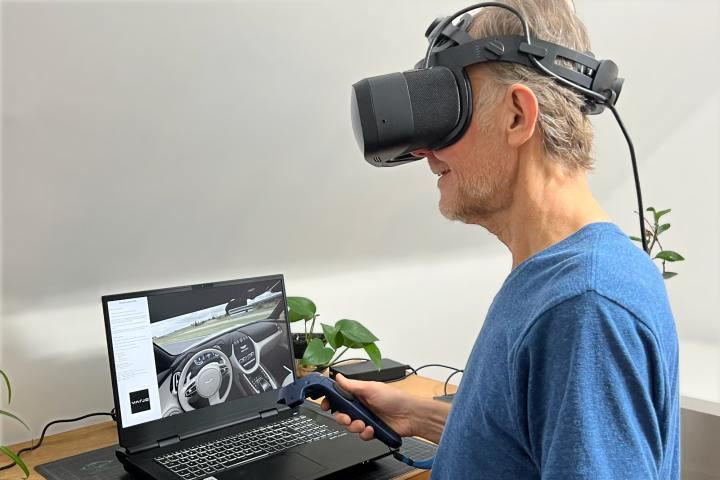
Display resolution is not the only metric to consider for a VR headset and a top-quality lens makes all of the difference. Varjo uses aspherical lenses that match and possibly surpass the edge-to-edge clarity of the pancake lenses used in the latest VR headsets. Older fresnel lens designs that have visible rings to focus light are still prevalent, despite their tendency to produce the dreaded light streaks known as god rays.
While it took days to dial in a headset fit that resulted in good clarity on my Quest Pro, the Varjo Aero looks great from the moment I put it on. Also, I don’t need to wear glasses to see the Varjo Aero’s display with maximum sharpness, while I needed to wear glasses to see the most detail when using the Quest Pro.
The Varjo Aero also adjusts to match my interpupillary distance (IPD) automatically with the click of a button, something that requires manual adjustment on most other VR headsets. Effortless clarity is another win for the Varjo Aero.
Supreme comfort
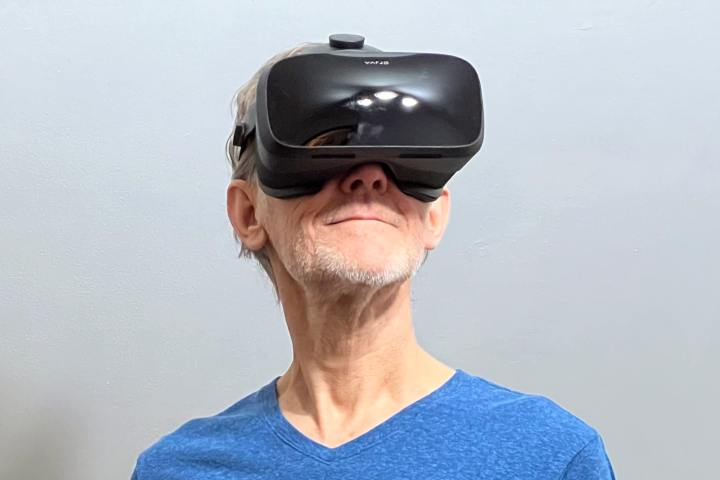
For a PCVR headset, the Varjo Aero isn’t lightweight but the comfort of the head strap design is excellent. After wearing it for hours, I still barely notice the weight on my head and there’s almost no pressure on my face despite the facial interface that fully blocks external light.
The closest comparison would be with a much lighter PCVR headset like the HP Reverb G2. At 1.6 pounds, the Varjo Aero should feel heavy but it doesn’t. I like my Quest Pro but did eventually add a neoprene cushion to the forehead pad to allow extended use.
With three points of adjustment, getting the perfect fit is quick and easy, making the Varjo Aero the most comfortable VR headset I’ve ever worn.
What you need
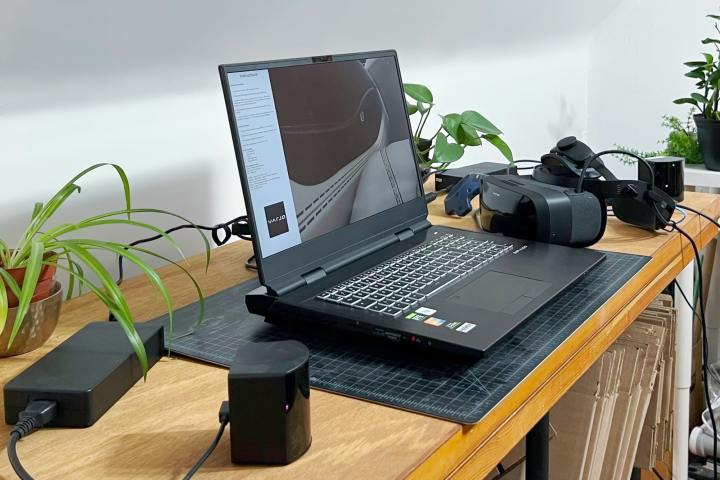
One of the few drawbacks to Varjo’s system is a problem with almost every other PCVR headset. There’s no option for standalone gaming so you have to connect the Aero to a Windows computer or a laptop to use it.
Varjo recommends a gaming PC with an Nvidia GeForce RTX 2080 or better. Note that AMD GPUs are not supported. System memory should be 8GB or more.
Your computer also needs a DisplayPort 1.4 connection as well as a USB A 3.0 port. The CPU requirements are easier and you can get by with an Intel Core i5-4590, Xeon E5-1620, or an AMD Ryzen 5 1500X.
While these specifications will work, for best performance with the Varjo’s combined display resolution of 5760 x 2720 pixels for both eyes, you’ll want the best computer and the fastest GPU that you can afford to appreciate the high-quality VR headset that you’re paying for.
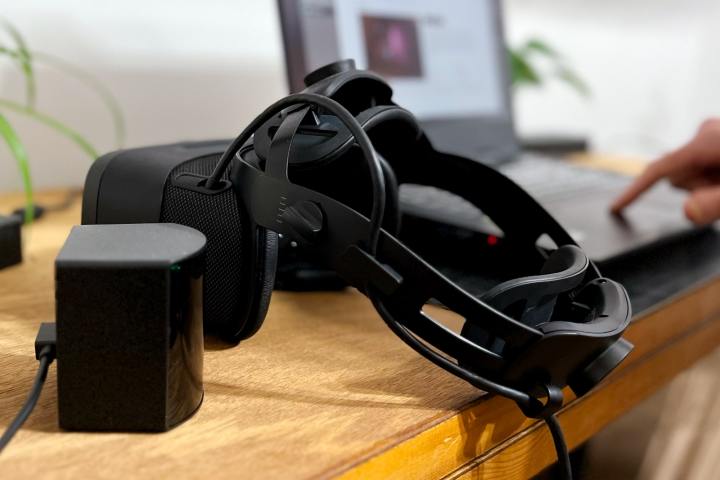
The laptop I used for testing the Varjo Aero, a Schenker DTR-17, included a high-performance Nvidia GeForce RTX 3080 and an Intel Core i7-11700K processor. The laptop is so power-hungry that it requires two power supplies to reach top performance and the fans ramped up frequently to handle the noticeable heat output as it fed crisp, high-resolution images to the Aero.
One or two SteamVR-compatible controllers and two or more Steam base stations are needed as well. Since the Varjo Aero doesn’t include speakers, you’ll also need wired earbuds. When you add everything up, it will be an expensive purchase if you are starting from scratch.
My recommendation
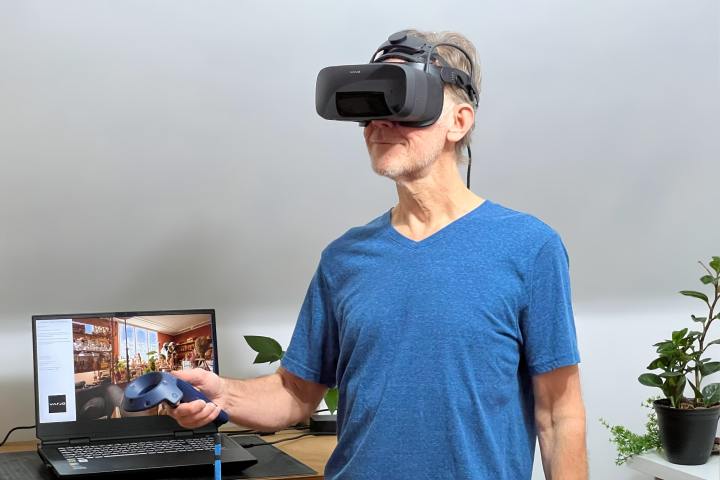
I loved using the Varjo Aero for the last few weeks and it truly has the best sharpness and clarity of any VR headset I’ve experienced to date. The Quest Pro comes close but I feel like the Aero just edges it out in terms of visual quality. The increased brightness and greater number of mini-LEDs might be the difference, or perhaps it’s the Aero’s dynamic, foveated rendering that enhances quality in the display area where your eyes are looking. The Quest Pro has an option for dynamic foveated rendering as well, but few apps take advantage of this capability.
As a Quest Pro owner, I won’t be trading up and it isn’t entirely the cost that makes the difference. The Varjo Aero is clearly better at PCVR but lacks a standalone option. With a Quest Pro, I can grab my headset and controllers and travel anywhere in the house. It’s not so easy with a SteamVR system that requires a heavy laptop, base stations, and a headset that’s tethered to the computer.
Each person will have their own use case and if you’re already deep into PCVR and have little interest in moving around with a wireless headset, the Varjo Aero is the best solution if you can afford it.
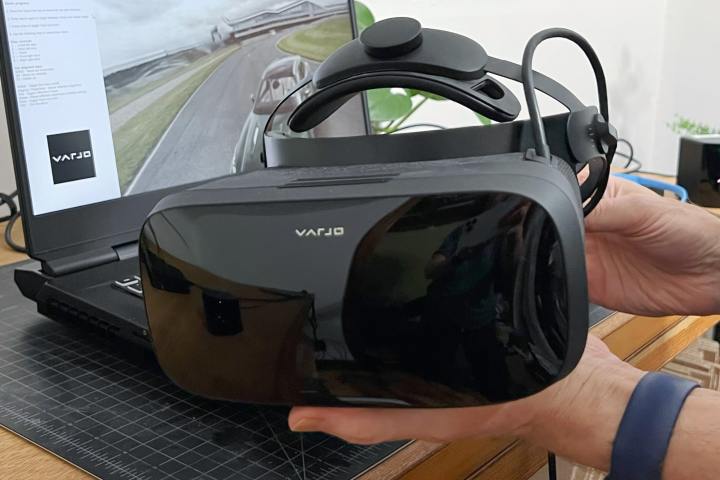
With several new VR headsets announced at CES, it might be a good idea to check around to see what’s coming soon. The Pimax Crystal and Shiftall MeganeX are sub-$2,000 PCVR headsets that are expected to launch this year, both featuring advanced high-resolution displays with good lens clarity and bright displays.
Even if these headsets match the Varjo Aero’s display quality, the comfort level is unknown. If money isn’t a concern, the best PCVR headset available in the near future is the Varjo Aero.



